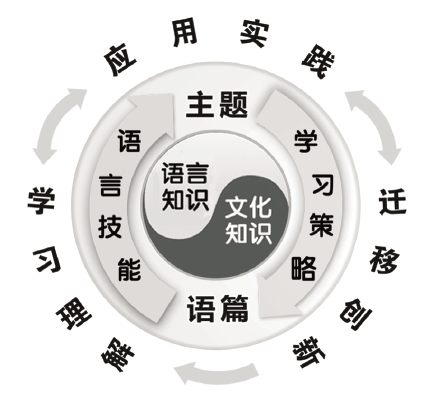The new version of the "English Curriculum Standards for Compulsory Education" has been officially promulgated. The learning, understanding, interpretation and implementation of the new version of the compulsory teaching curriculum are issues of common concern to the basic education community at present. In order to help teachers better grasp the essentials of the curriculum, "English Learning" has specially launched “Expert reading standard"Series, compiled the detailed interpretation of Teacher Wang Qiang, the head of the English Curriculum Standards Revision Group for Compulsory Education, on a number of important issues in the new version of the compulsory education curriculum standards, hoping to help teachers understand the curriculum standards, implement teaching, and improve their own literacy. For teaching content, teaching methods, teaching evaluation, resource development, textbook writing and teachersThe improvement and improvement of training and other aspects have brought more inspiration.
What are the elements of the curriculum content of the new version of the compulsory teaching curriculum?
How to understand and grasp?
Compared with the “English Curriculum Standards for Compulsory Education (2011 Edition)” (Ministry of Education, 2012) (hereinafter referred to as the "2011 Edition of the Compulsory Education Curriculum Standards"), the newly revised Compulsory Education Curriculum Standards (Ministry of Education, 2022) have undergone essential changes in the choice of content, highlighting the new educational values and values.Integrated content structure view.
The new version of the compulsory teaching curriculum standard clearly states in the first paragraph of the chapter on course content: The content of the English curriculum consists of elements such as theme, discourse, language knowledge, cultural knowledge, language skills and learning strategies. Focusing on these elements, through activities such as learning understanding, application practice, migration and innovation, the sustainable development of students' core literacy in the whole process of compulsory education is promoted (see the figure below).

Schematic diagram of content structure (new version of compulsory teaching curriculum standard)
It is not difficult to see that the six selected elements constitute a closely related structure that serves the goal of the development of students' core literacy. The content structure not only contains the basic knowledge and basic skills necessary for language learning, but more importantly, it contains the learning topics and multi-modal discourse content that can promote students' mental, emotional, lifelong learning, and attitude and value development.
In addition, there are the cultural knowledge carried by the discourse and the learning strategies needed to improve learning efficiency. The outer circle of the structure diagram is the way to organize and learn these contents, that is, around the six elements of the curriculum content, the learning method is to be organized through a series of interrelated and progressive activities such as learning understanding, application practice, and migration and innovation.
Shi Liangfang (1996) pointed out that the course content includes not only the basic facts, basic concepts or concepts that students need to learn, but also the organization and learning methods of subject knowledge, that is, how these facts, principles and problems are organized and realized. Learning. Zhong Qiquan (2007) also pointed out that the course content is a series of direct and indirect experiences purposefully selected from the human experience system based on the course objectives, and organized and arranged according to a certain logical sequence of knowledge system and experience system. Similarly, Wang Benlu (2017) also pointed out that the course content refers to specific facts, opinions, principles and problems in various disciplines and the way to deal with them. It is the sum of certain knowledge, skills, thoughts, opinions, beliefs, and speech and behavior habits.
It can be seen that the composition of the course content includes not only specific content such as basic facts, subject-related knowledge and methods, but also how these facts and principles are organized and implemented. In activities, students are the subject of learning. Only after the learner's personal active choice, and with the learner's personal knowledge and personal experience as the core for integration and recognition, and then transformed into personal cognition, the formation of new emotions and values, learning can be meaningful. It can be seen that the content elements of the curriculum and its corresponding teaching organization methods have inherent unity, which has become an important guarantee for the implementation of the curriculum goals.
According to this, language learning no longer only revolves around the symbolic system of language, but must simultaneously pay attention to the topics and cross-cultural knowledge directly related to Lide Shuren carried behind the language, as well as the attitudes and values implied behind it. Clearly position the purpose of language learning to be able to understand and express meaning, emotional attitudes and values in specific situations, develop the quality of thinking, establish a sense of community of human destiny, spread the excellent Chinese culture, embody cultural self-confidence, develop the necessary learning abilities for lifelong learning, and change the long-standing habit of learning language for the sake of language., The practical misunderstanding of learning language in order to take the exam.
Author profile
Wang Qiang, Professor and doctoral supervisor of the School of Foreign Languages and Literature, Beijing Normal University, and director of the Institute of Foreign Language Education and Teacher Education. Member of the Basic Education Teaching Steering Committee of the Ministry of Education, Chairman of the Foreign Language Teaching Professional Committee of Basic Education of the Ministry of Education, head of the Revision Group of General High School English Curriculum Standards and Compulsory Education English Curriculum Standards of the Ministry of Education, and Director of the Foreign Language Teacher Education and Development Professional Committee of the China Association for Comparative English-Chinese Studies.
References
-
施良方. 1996. 课程理论——课程的基础原理与问题[M]. 北京: 教育科学出版社.
-
王本陆. 2017. 课程与教学论(第三版)[M]. 北京: 高等教育出版社.
-
钟启泉. 2007. 课程论[M]. 北京: 教育科学出版社.


Leave a Reply